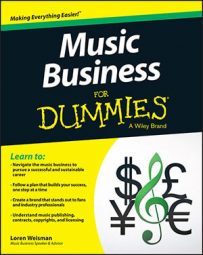Advertising yourself in the music business can be tough. You may want to consider giving onliner ads a try. Give your ads time to reach your audience, and create shorter campaigns to make tracking that much better. Too many rush to start a Twitter campaign thinking they are reaching the world, but then they find out they barely reached anyone at all.
Take advantage of options that sites such as Facebook, Twitter, and Google+ offer when you create your ad. You can specify the targeted age range, location, keywords, topic, and more so that your ad is geared toward the demographic you want. Like print ads, trying to do a massive international campaign on a small budget will not help to get you seen. The conversion to fans, sales, and engagement is in the focusing of your ads and tracking the effectiveness of them.
If you create an ad that’s hitting people all over the country, you have no idea what responses and actions are coming from where. If you focus a campaign, however, and create small advertising runs that zero into key demographics such as age, location, sex, education, and a number of other different variables, you can learn the patterns of what works and what doesn’t.
There’s a great deal of information online about how to create a campaign, but it considers only limited variables as well as elements that might not relate to you.
Start small with your ads
Try a given city, then target a limited age range and only women (or only men) and run the ad for only a week. Think about what’s going on in that city that week . . . big sporting event? Summer celebration? Comic con?
Hitting the really cold-winter cities like Green Bay and Buffalo in the middle of winter when more people are online can help draw people to your ad, just as hitting places like Orlando and Miami in the middle of summer, when people are inside avoiding the intense heat.
If you lean more toward an over-21 audience, stick in a tighter range of 21 to 25. If you’re hitting a college town, go for 18 to 22 to hit the averages of the college ages. This all comes down to thinking a little more in depth and zeroing in on a target audience that sees your ads and connects with you.
Limit the time and the expense of an ad or campaign
Go shorter, go cheaper, and go sweeter until you know you have an audience and an ad that works for you. It’s all about the conversion of an ad that connects you with fans and gets them to your website, social media pages, music, products, and shows. It can take time to grow campaigns and zero in on the best places, ages, and other details, but the more you track the results, the better each ad will work for you.
You may have an ad that targets a specific city, town, or location, or you may be targeting a limited group of people by age, likes, or education. But you’re still marketing to the world on your website and social media. Keep that content coming and going strong. An ad is only as good as the content you have available as people click through to you. Ad campaigns to new and empty pages aren’t going to give you the engagement you’re looking for.
Move these small campaigns around the country — even around the world. Tie in short campaigns of five days to a week to cities where you’re playing, places where you’ve been, and further away from where you previously had an ad to fully understand how people are connecting with you.
For example, if you run a small campaign one week in Boston and then the next week in Worchester (which isn’t all that far away), you might see overflow or not know exactly who connected with your ad where.
Tracking the details of the campaign
Track the money spent, the location, the age ranges, and all the other details, followed by the results. Look at how many people connected with you; your ability to garner any press, reviews or stories in that area; if you were able to book a gig there; and if sales or other contacts from bands for networking came about. These are all the key factors of a strong campaign.
The more information you get on what is and isn’t working, the better every campaign that follows will be. Make sure you’re switching up the ad and site formats. One week, try Facebook; the next Twitter; the following maybe both, but aim for different towns and cities entirely if you have the budget.
Switch up from advertising a post to advertising a page or a product. This allows for a consistent string of advertising that supports you, your music, your pages, and your content.
Following up on a direct ad
Soliciting to a club, a booking agent, other bands, local newspapers or entertainment magazines after a campaign is a great idea. With your more direct ad that’s centrally located, you might have shown up in a feed that someone didn’t click through, but you’re now familiar and recognized when you reach out.

